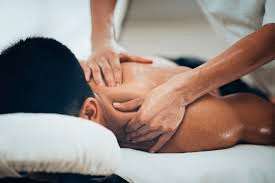“What is the difference between Swedish and Sports Massage?’’- a question that is frequently asked by many people. There are many different types of massage that exist, however, two most commonly techniques practiced today are Swedish and Sports Massage. Both are very effective but to maximise the benefits of each, it is important to understand the differences, so that you know which massage technique is most suited to you.
What is Swedish Massage?
Swedish massage is used to promote psychological and emotional well-being through stress reduction and relaxation by applying long, slow and gentle massage strokes. The application of Swedish massage can stimulate the release of the body’s natural endorphins which are known as our “feel good” hormones. Different types of techniques used include: effleurage, petrissage, vibration and friction.
Evidence shows that Swedish massage is very beneficial for stress reduction. A study conducted by the National Center for Complementary and Alternative Medicine found that volunteers who were given a 45-minute Swedish massage demonstrated significant decreases in levels of the stress hormone ‘cortisol’. Volunteers also had increases in the number of white blood cells that are part of the immune system, and a boost in the immune cells that may help fight colds and the flu[1]
What is Sports Massage?
The techniques used in Swedish massage are very similar to those used during a sports massage, however, the main difference being that sports massage tends to focus on a particular muscle group and involves greater pressure to work deeper into the tissues, which in turn produces greater effects. Sports massage can be defined as ‘a mechanical manipulation of body tissues with rhythmical pressure and stroking for the purpose of promoting health and well-being’[2]. One of the main benefits of sports massage is that it helps reduce muscle tightness by breaking down adhesions and scar tissue, which is achieved through the breakdown of cross-fibre connections within the muscle. Other benefits include:
- relief of muscle tension and stiffness
- faster healing of strained and sprained muscles or ligaments by increasing blood flow
- reduced muscle pain
- greater range of motion
Even though sports massage is portrayed as being more suitable for athletes, this type of massage is also great for those who experience stress-related muscle tension from work or day to day life events.
Which is more effective?
People often ask which form of massage is better. Unfortunately, the answer is not so simple as it varies from person to person depending on their needs. There is no ‘superior’ massage technique, each has their own benefits and advantages. Swedish massage would be more suited to individuals who suffer from high stress levels to help them unwind and relax. Sports massage would benefit those who are either recovering from an injury, preparing for a sporting event, or just want to get rid of those horrible knots!
Massage with Chiropractic Care
Massage can be combined with chiropractic care to enhance the effects. Below outlines some of the reasons that a patient may benefit from combining the use of both chiropractic care and massage:
- Longer lasting effects, which gives the body more time to heal
- Noticeable reduction in pain
- Makes adjustments easier- massage helps relax the muscles, making it easier to perform Chiropractic adjustments
This article provides a brief understanding of the differences between Swedish and sports massage and the affects that they can have on the body. So, why not book yourself in for a massage today to see the effects yourself!
[1] Rapaport, MH. Schettler, P. and Bresee, C. (2010). A preliminary study of the effects of a single session of Swedish massage on hypothalamic-pituitary-adrenal and immune function in normal individuals. The Journal of Alternative and Complementary Medicine, Volume 16(10) pp. 1–10.
[2] Best, T. Hunter, R. Wilcox, A. and Haq, F. (2008) Effectiveness of sports massage for recovery of skeletal muscle from strenuous exercise. Clinical Journal of Sport Medicine, Volume 18(5) pp. 446-460.

